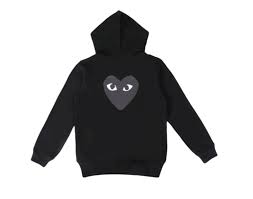Being an expert in the differences between real and replica clothing you will need to be extremly sharp, detailed orientated as well knowing specific brand elements. Directory — Price A major difference between the two is how much they cost. Designer clothes are generally very expensive matching the brand name they carry, from fabrics used and as well how much time your sewing level of in general. For example, a real Gucci T-shirt can set you back $400 or more while the knockoff is for sale at under $50. Although the price may be attractive, replica clothes are actually much cheaper for a very good reason: they are fake.
Another important factor is the quality of material and stitching, True luxury brands, on the other hand, are dedicated to quality fabrics which have a high thread count and guest towels made of fine cotton material or smooth silk fabric dangerous leather selected for strength and feel. Counterfeit clothing, on the other hand, could be made using inferior synthetic materials that do not have that same softness or weight-to-durability. The stitching is a big giveaway, replica designers often have irregular or uneven looking stitches on their bags where as the real deal should look perfect with no loose ends.
Another way to tell the real from the fake is most likely an industry-specific term like, "brand tags and serial numbers." Real designer items tend to have great brand tags with exact font, logo and serial numbers which can be matched up with the brands. These tags are typically sewn into the piece of clothing, commonly with distinguished exactness. For instance, items made by Louis Vuitton carry a date code format that aligns with their records of said codes which can help authenticate the product. Replices may pose like these tags, but they almost always fumble the details: either incorrect fonts are used; there is a misspelling on said tag; or it was put together quickly at low quality to be easily damaged.
The historical examples of the fake sneaker scandals during 90s also highlights misjudgement on packaging and presentation. Luxury even extends to the packaging of high-end brands who often wrap their goods in branded tissue paper before placing them carefully into a strong, well-designed box. The Replica packaging is not as detailed with lower quality materials compared to the original, suffice it pay less attention to detail and presentation.

Reliable Quotes By Fashion Experts That Validate How Important Is To Know Your Brand Specifics "Every luxury brand has DNA that is sort of impossible to replicate identically," Sarah Andelman, a fashion consultant on the French capital's hip chic strip Boulevard Beaumarchais. This means paying attention to any known brand-specific information, including those from authenticators (like placement info and fabric patterns) when looking at items that you intend on buying!
You also have to think from where the clothes are coming. Designer pieces are usually sold at the selected brand's boutiques or stores, and their online shops. On the other hand, replica clothing is mostly common on third-party marketplaces or counterfeit websites that do not focus upon luxury goods. If it sounds too good to be true, then there is a significant possibility of this person being the one. If you find a brand new Chanel bag for 80% less than retail price on some website you never heard of, most likely this indicates the item is counterfeit.
So the first thing you should realize in using this question on how to tell real from replica clothing is that, You will need a combination of looking at price,checking through material and applying brand specific knowledge. As is always the case, prospective buyers should beware and avoid impulsivity—particularly when dealing with high-end goods being sold from unknown places. Replica clothing might sound like a nice gateway into the world of replicas, but understand this alternative fashion market is huge and must be explored with caution.